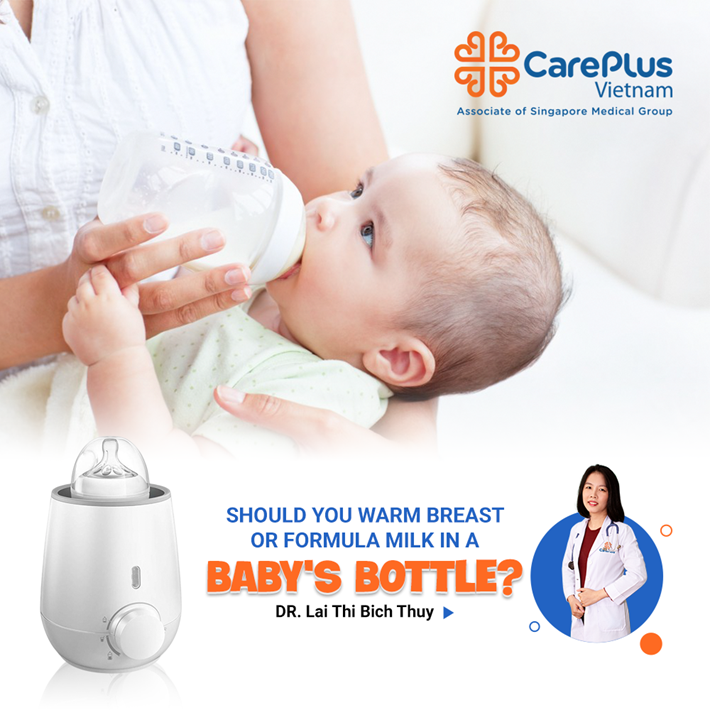Should you warm breast/formula milk in a baby's bottle?
Mình khám bé 2 tháng, bú sữa mẹ qua bình. Khi bé đói, mình thấy mẹ cẩn thận lấy bình sữa đang được ủ ấm trong bình ủ điện. Hỏi lại mẹ thì mẹ nói hay ủ sữa để chuẩn bị cho bé bú hoặc khi đi xa vì nghĩ rằng sữa ấm là tốt nhất cho hệ tiêu hóa bé. Điều này đúng hay sai? Ba mẹ có nên dùng bình để ủ ấm sữa cho bé không?

4/5/2022 10:33:59 AM
Bác sĩ trả lời: ĐIỀU NÀY SAI vì nhiệt độ bình ủ trung bình từ 35 đến 45 C và đây là nhiệt độ thuận lợi cho sự tăng sinh và phát triển của vi khuẩn.
Theo khuyến cáo:
- Sữa mẹ MỚI VẮT RA chỉ được để ở nhiệt độ phòng (mát, tầm < 25C) tối đa 4 giờ, không khuyến cáo ủ ấm sữa mang đi, nếu bé bú lắt nhắt thì sữa chỉ được dùng trong 2 giờ.
- Còn đối với sữa công thức cũng tương tự.
Một loại vi khuẩn nguy hiểm tên Cronobacter sakazakii gây nhiễm trùng máu, viêm màng não, viêm ruột hoại tử .. có thể bị trộn lẫn trong sữa công thức khi quy trình sản xuất bị nhiễm bẩn.
Ở nhiệt độ dưới 5 độ C vi khuẩn sẽ không phát triển. Vì thế, nếu sữa công thức đã được pha sẵn để sử dụng thì nên được để lạnh dưới 5 đọ C thì mới bảo quản trong 24h. Còn nếu để ở nhiệt độ phòng thì phải sử dụng trong 2 giờ (không hâm nóng sữa).
Lời khuyên của Bác sĩ:
1. Trẻ bú mẹ nên bú trực tiếp. Hạn chế bú qua bình.
- Nếu dùng sữa mẹ MỚI VẮT thì để được 4 tiếng (< 25C - nhiệt độ phòng)
- Nếu dùng sữa mẹ RÃ ĐÔNG mang theo chỉ để được 2 giờ (< 25C - nhiệt độ phòng)
2. Trẻ bú sữa công thức: KHÔNG PHA SẴN SỮA
- Chuẩn bị: bình đựng nước ấm, khi bé có nhu cầu bú thì mới pha sữa vào nước ấm và dùng trong 2 giờ ( không ủ sữa - mà ngược lại làm lạnh sữa nếu di chuyển xa)
Chú ý: có thể cho bé bú sữa mẹ mới vắt, sữa rã đông còn mát, sữa công thức nguội mà không cần ủ ấm mới bú (sữa mát, nguội không gây rối loạn tiêu hóa).
Nguồn tham khảo:
1. CDC: Human Milk Storage Guidelines
2. Correct Formula Preparation and Bottle-Feeding - EneA Global